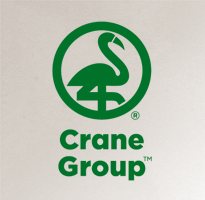
Lustron houses are prefabricated enameled steel houses developed in the post-World War II era United States in response to the shortage of homes for returning G.I.s by Chicago industrialist and inventor Carl Strandlund. Considered low-maintenance and extremely durable, they were expected to attract modern families who might not have the time or interest in repairing and painting conventional wood and plaster houses. Lustron production ceased in 1950 due to the company's inability to pay back the startup loans it had received from the Reconstruction Finance Corporation. Over 2,000 homes were constructed during the Lustron's brief production period, and many remain in use today. Several have been added to the National Register of Historic Places.
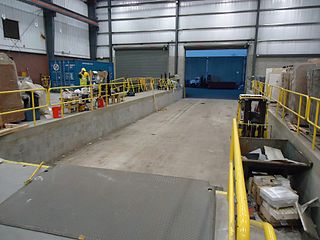
A warehouse is a building for storing goods. Warehouses are used by manufacturers, importers, exporters, wholesalers, transport businesses, customs, etc. They are usually large plain buildings in industrial parks on the outskirts of cities, towns, or villages.

White Castle is an American regional hamburger restaurant chain with 345 locations across 13 states, with its greatest presence in the Midwest and New York metropolitan area. Founded on September 13, 1921, in Wichita, Kansas, it has been generally credited as the world's first fast-food hamburger chain. It is known for its small, square hamburgers referred to as "sliders". The burgers were initially priced at five cents until 1929 and remained at 10 cents until 1949. In the 1940s, White Castle periodically ran promotional ads in local newspapers which contained coupons offering five burgers for ten cents, takeout only. In 2014, Time named the White Castle slider "The Most Influential Burger of All Time".
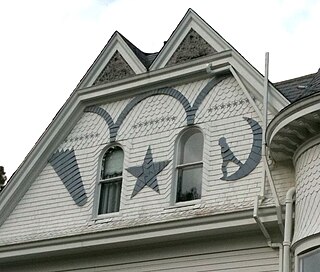
Siding or wall cladding is the protective material attached to the exterior side of a wall of a house or other building. Along with the roof, it forms the first line of defense against the elements, most importantly sun, rain/snow, heat and cold, thus creating a stable, more comfortable environment on the interior side. The siding material and style also can enhance or detract from the building's beauty. There is a wide and expanding variety of materials to side with, both natural and artificial, each with its own benefits and drawbacks. Masonry walls as such do not require siding, but any wall can be sided. Walls that are internally framed, whether with wood, or steel I-beams, however, must always be sided.
This page is a list of construction topics.

Vinyl siding is plastic exterior siding for houses and small apartment buildings, used for decoration and weatherproofing, imitating wood clapboard, batten board and batten or shakes, and used instead of other materials such as aluminum or fiber cement siding. It is an engineered product, manufactured primarily from polyvinyl chloride (PVC) resin. In the UK and New Zealand a similar material is known as uPVC weatherboarding.
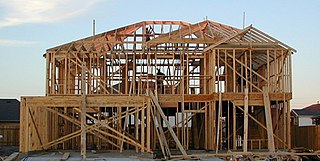
Framing, in construction, is the fitting together of pieces to give a structure support and shape. Framing materials are usually wood, engineered wood, or structural steel. The alternative to framed construction is generally called mass wall construction, where horizontal layers of stacked materials such as log building, masonry, rammed earth, adobe, etc. are used without framing.

A window shutter is a solid and stable window covering usually consisting of a frame of vertical stiles and horizontal rails. Set within this frame can be louvers, solid panels, fabric, glass and almost any other item that can be mounted within a frame. Shutters may be employed for a variety of reasons, including controlling the amount of sunlight that enters a room, to provide privacy, security, to protect against weather or unwanted intrusion or damage and to enhance the aesthetics of a building.
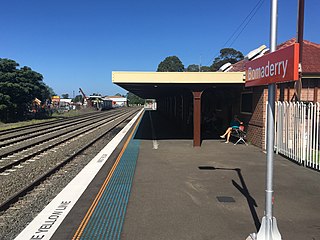
Bomaderry railway station is a heritage-listed single-platform intercity train station located in Bomaderry, New South Wales, Australia, on the South Coast railway line. The station serves NSW TrainLink diesel multiple unit trains to Kiama. Early morning and late night services to the station are provided by train replacement bus services. A siding near the station is used by freight trains operated by the Manildra Group.
The Al Muhaidib Group is an international private group of companies based in Saudi Arabia that was founded in 1946 by Abdul Kadir bin Abdul Muhsin Al-Muhaidib. The current chairman of the board of directors is Sulaiman A. K. Al-Muhaidib.

JELD-WEN is an American company with its headquarters in Charlotte, North Carolina. The company operates more than 120 manufacturing facilities in 19 countries. JELD-WEN designs, produces and distributes interior and exterior doors, wood, vinyl and aluminum windows, wall systems, shower enclosures, closet systems and other components used in the new construction, as well as repair and remodel of residential homes and non-residential buildings.
Rosati Windows, founded by Mike Rosati in 2000, manufactures and installs replacement windows and doors from its Columbus, Ohio factory. It is part of the Rosati Windows Family of Companies, which also includes Rooms of Distinction, builder of custom room additions, conservatories, wine rooms, and finished basements, and The Fix-It Crew, provider of maintenance and repair services for home and business owners.

The Dry Dock Complex consists of six interconnected buildings located at 1801–1803 Atwater Street in Detroit, Michigan, as well as the remains of a nearby dry dock at 1900 Atwater Street. The 1801-1803 Atwater complex is also known as the Globe Trading Company Building, and in 2015 was opened by the Michigan Department of Natural Resources as the Outdoor Adventure Center.

Columbus, Ohio has a generally strong and diverse economy based on education, insurance, banking, fashion, defense, aviation, food, logistics, steel, energy, medical research, health care, hospitality, retail, and technology. Overall, it was ranked as one of the top 10 best big cities in the country in 2010, according to Relocate America, a real estate research firm.
Mutares SE & Co. KGaA is a German-based holding company that acquires medium-sized companies in turnaround situations in order to sell them off again, if restructuring succeeds.

The Norris and Harriet Coambs Lustron House, also known as the Coambs-Morrow House, is a historic Lustron house located in Chesterton, Indiana. It was built in 1950, this was one of the last manufactured Lustron homes (#2329) of the 2500 sold and produced by the Lustron Corporation. The house has a Lustron two-car detached garage and is located in a pre-World War II subdivision with some homes dating before World War I. The house is a one-story ranch style with no basement. It contains three bedrooms with living room, dining area, kitchen, utility and bathroom totaling 1,200 square feet (110 m2) of living space.

The Dr. B.J. Kendall Company is a historic industrial facility at 228 North Main Street in the Enosburg Falls village of Enosburgh, Vermont. Built in 1880, it was for many years the site where "Kendall's Spavin Cure", a treatment for a horse ailment, was manufactured and marketed. This business was one of the town's economic successes, its owners contributing significantly to its architectural heritage. The building was listed on the National Register of Historic Places in 1993; as of 2016, it is standing vacant.

Budd Dairy Food Hall is a food hall in the Italian Village neighborhood of Columbus, Ohio. The Cameron Mitchell Restaurants-run hall holds ten foodservice locations, three bars, and indoor, patio, and rooftop seating. It is situated in the historic Budd Dairy Company building, a former milk processing and distribution facility. The space was renovated beginning in 2018, and opened in April 2021.

The Stoddart Block is a historic building in Downtown Columbus, Ohio. It was listed on the National Register of Historic Places in 1994. The building was constructed in 1911 and designed by the local firm David Riebel & Sons. It was designed for a large furniture store, the Frohock Furniture Company, which operated there until 1938. A second furniture company, Hadley's Furniture Company, occupied the building until 1962. It then operated as the Children's Hospital's thrift shop, from 1962 to 1990. By 2014, the building held 52 low-income apartments. It was renovated into affordable micro-apartments at this time.

The Bellows School, also known as the Bellows Avenue Elementary School, is a historic school building in the Franklinton neighborhood of Columbus, Ohio. The building was constructed for the Columbus Public School District in 1905, designed by local architect David Riebel and built by George Bellows Sr. The elementary school operated until 1977; since then the building has been mostly vacant. The building was deemed eligible for the National Register of Historic Places by the Ohio Historic Preservation Office in 2006. In 2014, a developer announced plans to renovate the structure, despite plans from Ohio's transportation agency to demolish it to expand nearby highway exit ramps.
